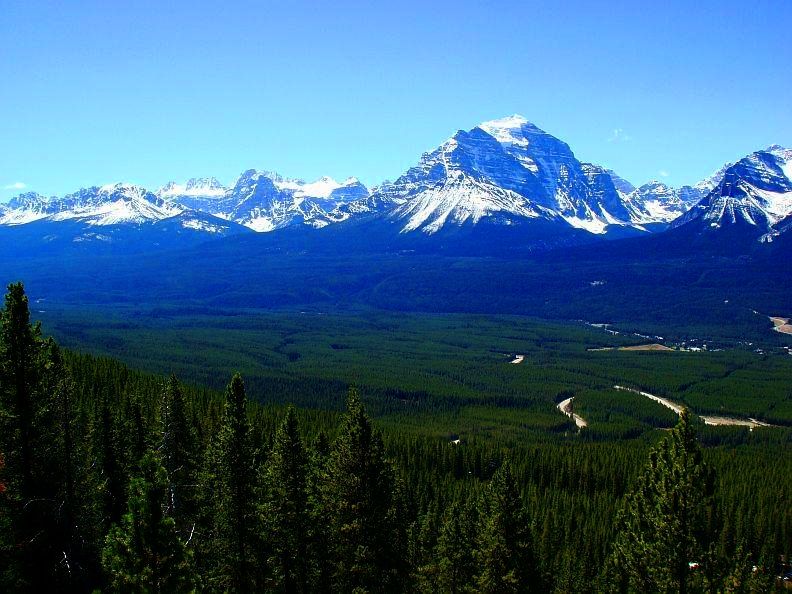The Rockies

The Rockies are a well-named group of jagged, snow-capped peaks which run through the western part of North America. This chain of mountains extends over 3,000 miles and is almost 1,000 miles wide in some places. They begin in Northern New Mexico and extend as far as northern Alaska. From New Mexico, the mountain range stretches through Colorado, Utah, Wyoming, Idaho, and Montana.
At the International Border, the part of the range known as the Canadian Rockies passes through the provinces of Alberta and British Columbia, and the Northwest Territories and Yukon Territory of Canada. The Rocky Mountain range is part of the Cordilleran chain which reaches from Cape Horn to the Arctic Circle. The Sierra Madre Oriental of Mexico and the Andes of South America form the southern part of this chain.
Many people tend to include several peaks and ranges adjacent to the Rocky Mountains as a part of them, when they really are not. Geographers, however, do not include such ranges as the Sierra Madre in Mexico, the Sierra Nevada, Cascade and Coast ranges in the United States, and the Coast, Gold and Selkirk ranges of Canada.
Most of the peaks in this range were formed in a great upheaval of the earth's crust. The sides of the mountains have been found to contain the fossil skeletons of animals that once lived in the sea, and rocks that were formed in the hot interior of the earth. In the southern half of the range, there are mountains which were once volcanoes. Evident signs of volcanic activity are also found in the huge lava sheets of Idaho and the geysers of Yellowstone National Park. Since the time they were formed, the peaks have been cut into their sharp spires and angled faces by the forces of glaciers. The glaciers hollowed out the valleys between the mountain peaks.
The great mineral riches of the Rocky Mountains include gold, silver, lead and copper, as well as coal, oil shale, and phosphate rock. These mountains are famous for their scenic beauty and natural wonders. Several national parks of the United States are located in this range, including the oldest and largest, Yellowstone National Park, and the Rocky Mountain National Park of Colorado (a nice place to visit, I might add. I climbed Long's Peak here in 2000). Such mighty rivers as the Columbia, the Missouri, the Arkansas, the Colorado and the Rio Grande begin here.
The highest and broadest part of the range lies south of the Laramie Plains in Colorado and Utah. This is the Southern Rockies, with 55 peaks in Colorado rising over 14,000 feet (4,267 m.) above sea level; also there are many other peaks in Utah, New Mexico and Wyoming over 13,000 feet (3.962 m.). The highest point in the Rockies is Mount Elbert in Colorado at 14,440 feet (4,401 m.).
The range in Canada includes dozens of peaks more than 11,000 feet (3,353 m.) high, and several reaching to more than 12,000 feet (3,657 m.). Mount Robson, in British Columbia at 12,972 feet (3,954 m.) is the highest point in the Canadian Rockies. Another notable peak in Canada is Mount Assiniboine at 11,870 feet (3,618 m.). In the beautiful national parks of Jasper and Banff in Alberta, you'll find some of the finest scenic areas in North America.
As the range extends north through Alaska, the peaks gradually become lower until they disappear in a series of ice-covered hills at the Arctic Circle.
From the Rockies to Mountain Ranges page



